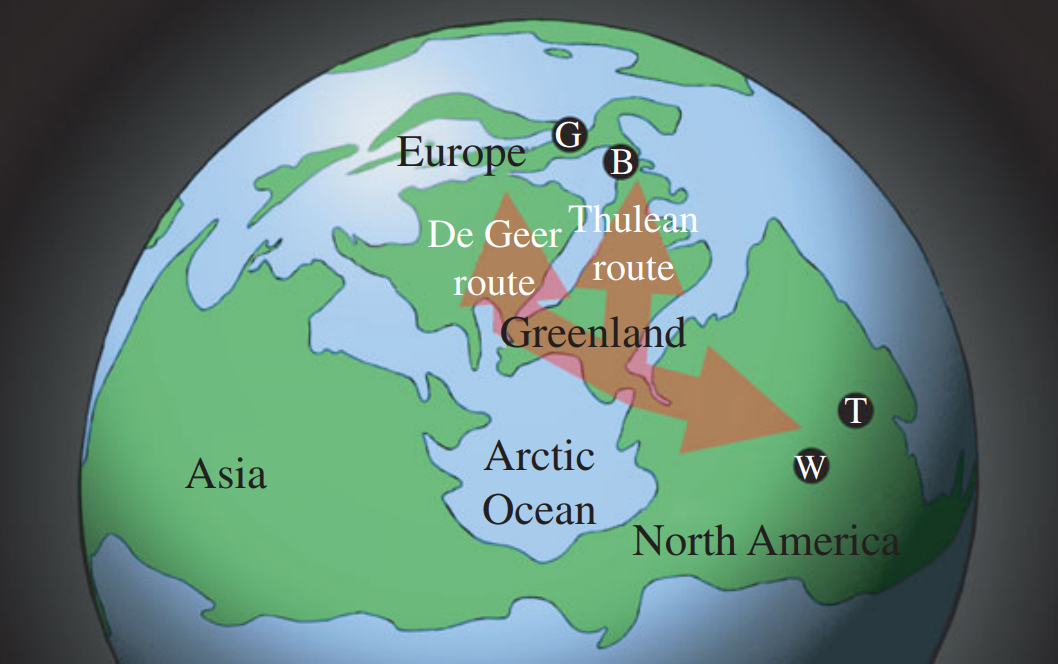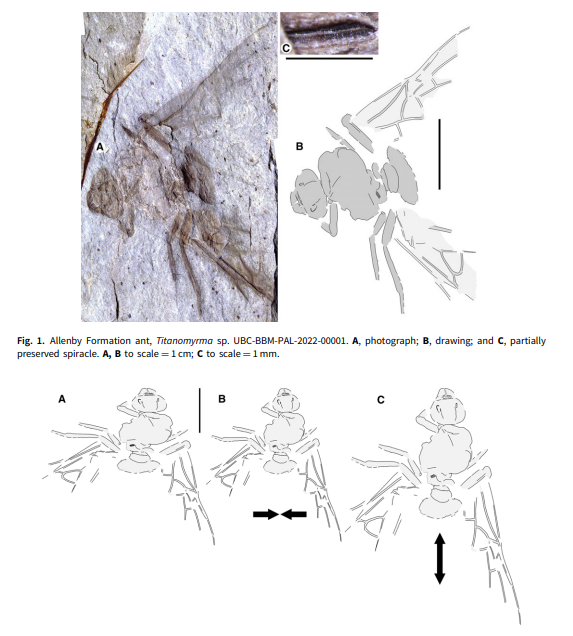
The giant fossil queen ant Titanomyrma, discovered in the Allenby Formation near Princeton, British Columbia, the first of its kind in Canada. Bruce Archibald
A Princeton resident discovered the fossil of a giant, ancient ant in the nearby Allenby Formation, a rock formation that contains many plant and animal fossils.

Researchers say it’s the first known Canadian specimen from the genus Titanomyrma, meaning “Titanic Ant.”
Scientists estimate the gargantuan insects lived around 50 million years ago and may have been about half a foot long.

The fossil extinct giant ant Titanomyrma from Wyoming that was discovered over a decade ago by SFU paleontologist Bruce Archibald and collaborators at the Denver Museum. The fossil queen ant is next to a hummingbird, showing the huge size of this titanic insect. Credit: Bruce Archibald. Bruce Archibald
Dr. Bruce Archibald is a paleoentomologist at Simon Fraser University and first discovered a similar specimen back in 2010 in Wyoming, but said he was thrilled when another fossil of the massive insect turned up in B.C.

Following that study, he said he and his colleagues looked at answering the next crucial question.
“How did it cross the continents and become suddenly in both places at the same time?”

Reconstructed early Eocene northern continental positions and shorelines in polar view with Formiciinae fossil localities (G, Germany; B, Britain; W, Wyoming;T, Tennessee), and dispersal routes across the Arctic indicated by red arrows. S. B. Archibald et al

the new Canadian fossil was distorted by geological pressure during fossilization, so its true life size is unclear. The fossil can be compressed or lengthened resulting in a size difference which scientists are looking into. Archibald et al. / The Canadian Entomologist
Dr. Archibald says researchers may need to revise their ideas of climate tolerance of giant ants if the specimen is, in fact, of comparable size to other specimens previously found.